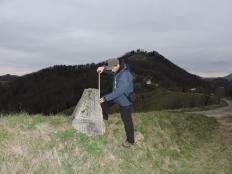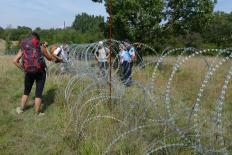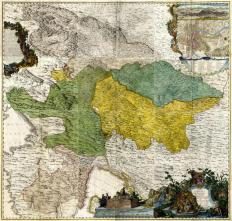Historical Geography and cartography
Historical geography is a science that addresses geographical circumstances of the past and studies individual geographical features as a result of historical development, as well as seeks to understand the "functioning" of past (cultural) landscapes. As sources it uses: historical written in cartographic works, findings from the natural sciences and the landscape itself.
Historical cartography is a science that studies, analyses, and interprets old maps. Old cartographic representations can be a primary historical and geographical source, offering insight into the (cultural) landscape, geopolitical situation, or time period in which they were created.
In both cases, we rely on the rich geographical and cartographic heritage preserved by the Geographical Museum, which operates within the institute.
List of notable achievements in the last three years:
Mikša, P., Zorn, M. 2024: The "Slovenian" Everest 1979: a small nation and the highest mountain in the world. In: Other Everests: One Mountain, Many Worlds. Manchester.
Zwitter, Ž., Fuerst-Bjeliš, B., Mrgić, J., Petrić, H., Zorn, M. 2024: Some insights into the environmental history of the Dinaric Karst. In: Environmental Histories of the Dinaric Karst. Cham.
Zwitter, Ž., Fuerst-Bjeliš, B., Mrgić, J., Petrić, H., Zorn, M. 2024: The Dinaric karst in environmental history perspective: conclusions, contextualisations, and outlook. V: Environmental Histories of the Dinaric Karst. Cham.
Gašperič, P. 2023: A new standardized methodology for analyzing cartographic information on old maps. Acta geographica Slovenica 63-2.
Gašperič, P., Babič, S. 2023: The semiotics of cartographic symbols on old maps. Acta geographica Slovenica 63-2.
Gašperič, P. 2022: Zgodovinska kartografija ozemlja Slovenije. [Historical Cartography of Slovenian Territory]. Geografija Slovenije 37. Ljubljana.
Zorn, M., Ciglič, R., Gašperič, P. 2022: State borders in the territory of Slovenia during World War II on cartographic materials produced by the occupying forces. V: Occupation Borders in Slovenia 1941–1945. Ljubljana.
Zorn, M., Mikša, P. 2022: Mejniki na štajersko-ogrski meji – nekaj primerov iz Občine Ljutomer in okolice. [Boundary stones on the border between the Duchy of Styria and the Kingdom of Hungary. A few examples from the Municipality of Ljutomer and its surroundings]. Kronika 70-3.
Zorn, M., Mikša, P. 2021: Boundary stones and their "hidden" legacy in Slovenia. In: Hidden Geographies. Cham.
Mikša, P., Zorn, M. 2021: Boundary stones: standing witnesses of World War II borders in present-day Slovenia. V: Boundaries and Borders in the Post-Yugoslav Space: A European Experience. Berlin.
Gašperič, P., Komac, B. 2020: Remapping fictional worlds: a comparative reconstruction of fictional maps. The Cartographic Journal 57-1.
List of research projects in the last three years:
- The Struggle for the Mountains: Slovene National Appropriation of the Alps (19th–21st century). Duration: 1/2025–12/2027, leader at the Institute: dr. Matija Zorn.
- Supplement to the Record of Hidden War Cemeteries and the Register of War Cemeteries with data on hidden war cemeteries in underground caves. Duration: 10/2022–9/2024, leader at the Institute: dr. Matija Zorn
- The Rapallo border: a quarter of a century of existence and a century of heritage and memory. Duration: 10/2021–9/2024, leader at the Institute: dr. Matija Zorn
- Creating, maintaining, reusing: border commissions as the key for understadning contemporary borders. Duration: 9/2020–8/2024, leader at the Institute: dr. Matija Zorn
Gallery:
Image 1: Studying the remains of former borders - Haloze.
Image 2: Karst edge.
Image 3: Map of Carniola.


